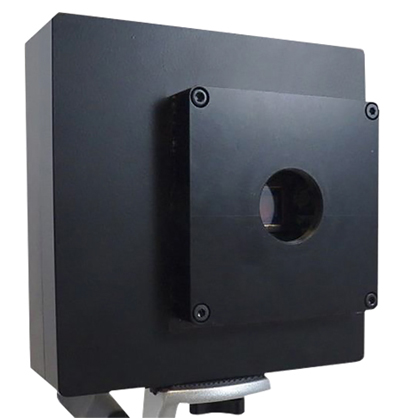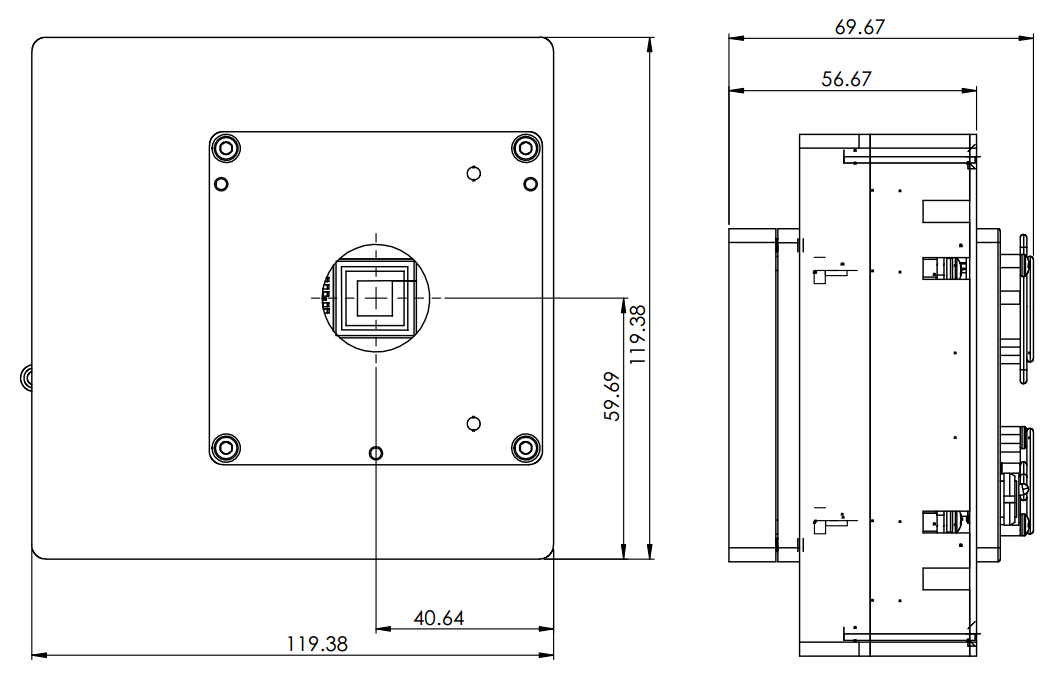The Canon 120MXS Evaluation Kit includes a camera with a Monochrome, Color, or RGB-NIR sensor and a USB 3.1 interface for simple connectivity. Test high resolution capabilities today using Canon's 120 MP CMOS Sensor.
Learn MoreThe Canon 35MMFHDXS Evaluation Kit allows integrators and end users to assess sensor performance and provides assets for image system designers to help accelerate development time.
Learn MoreThe Canon LI8020 Evaluation Kit is equipped with APS-H 250M pix CMOS sensor and ultra-high resolution imaging with 250 million pixels.
Learn MoreThe Canon LI5040 Evaluation Kit ....
Learn More
LI5040 Evaluation Kit
Critical Link’s MityCAM-3U5MGXS Evaluation Kit is delivered with a LI5040 sensor, a standard C mount lens, and is compatible with the AIA USB 3.0 Vision Interface (U3V). The kit is further enhanced by Critical Link’s specialized software tools tailored for their Arria 10 based processor card. The MityCAM-3U5MGXS streamlines the process of sensor evaluation and integration into products.
The Evaluation Kit includes:
- Evaluation camera with pre-installed sensor (mono, RGB, or RGB-NIR )
- Accessory package for out-of-the-box operation (quick start guide, power supply, all necessary cables)
- Embedded software to setup the sensor, acquire image data, and communicate over USB 3.1 interface with any USB 3 compliant UI
- PC-based UI application available for download to communicate with the camera
- Sensor board design files source code*
- VHDL code for the FPGA*
NOTE: A Lens is not included in this kit.
As the lens plays a critical role in any imaging system, it is imperative that a suitable lens is selected to evaluate sensor performance for your end application properly.
When selecting an appropriate lens, there are several key factors that must be considered: Lens Type, Lens Mount, Focal Length, Sensor Size, Resolving Power, and Aperture, to name a few of the more important ones. Some of these factors are associated with your application, and some are directly tied to how the CMOS sensor will perform. Please read below to learn more.
Applications
- Machine Vision
- Industrial Inspection
- Medical Imaging
- Intelligent Transportation Systems
- Microscopy
Technical Specifications
| Sensor Specs | |||
|---|---|---|---|
| Color Filter | RGB | Monochrome | RGB-NIR |
| Sensitivity (e/lx/sec) | 30,000 (Green) | 47,000 | 30,000 (Green) |
| Dark Random Noise | 2.6e rms @ Analog gain x1 | ||
| Saturation (@ Analog gain 0 dB) |
12,000e – Dynamic Range Priority Mode | ||
| 7,000e – Frame Rate Priority Mode | |||
| Resolution | 5 megapixels | ||
| Effective Pixels | 2592 x 2056 (Horizontal xVertical) | ||
| Sensor Size | Approx. 2/3 inch (8.8mm x 7.0mm) | ||
| Pixel Size | 3.4µm x 3.4µm | ||
| Maximum Frame Rate | 60fps – Dynamic Range Priority Mode | ||
| 120fps – Frame Rate Priority Mode | |||
| Shutter Type | Global electronic shutter function | ||
| Power Consumption (Type) | 500mW (all pixels @ 60 fps) | ||
| Evaluation Kit Camera Specs | |||
| FPGA | Intel Arria 10 | ||
| FPGA Processor | Dual Core A9 ARM | ||
| Interface | USB 3.1 Gen 1 | ||
| AIA Vision Protocol | |||
| Programmable General Purpose I/O | 4 External FPGA GPIO Pins | ||
| 3 Opto-Isolated Input Pins | |||
| Use as trigger / exposure inputs | |||
| Bit Rate/Maximum Frame Rate | 8-Bit: 50 fps | ||
| 12-Bit: 33 fps | |||
| ISP Functions | Region of Interest | ||
| Exposure Control | |||
| Framerate Control | |||
| Bad Pixel Replacement | |||
| Trigger Mode | External | ||
| Debug / Registry Setting Control | Peek / Poke Commands | ||
| Lens Mount | C-Mount | ||
| Power Input | 12 VDC | ||
Physical Dimensions (TBD)
Units in millimeters

Lens Selection
The Canon LI5040 Evaluation kit is provided without a lens in the box. As the lens plays a critical role in any imaging system, it is imperative that a suitable lens is selected to evaluate the sensor performance for your end application properly.
The LI5040 evaluation kit camera contains a C-Mount allowing a wide range of options for optics. When selecting an appropriate lens, there are several factors that must be considered: Lens Type, Lens Mount, Focal Length, Sensor Size, Resolving Power, and Aperture, to name a few of the more important ones. Some of these factors are associated with your application, and some are directly tied to how the Canon sensor will perform.
Based on your application and imaging environment, you will need to consider the following factors:
- The lens type (telecentric, entocentric, macro, fisheye, etc) will determine how you see the subject and what special features might be required in order to perform your analysis, testing, or meet your general imaging needs.
- Given the lighting conditions in your imaging environment, you will need to select a lens with an adequate Aperture or F-Stop. There are both positive and negative aspects to having either a very high or very low aperture. Care should be taken to select a lens with an optimal F number for your specific application.
- Depending on the distance from the subject to the lens, you will need to select a lens with the proper focal length to allow sharp, clean images.
In order to get the best performance from the Canon sensor, you will need to select a lens with the following minimum specifications:
- Since the evaluation kit camera is equipped with a C-Mount, you will need to look at available C-Mount lensing options.
- The lens must be rated for at least a 2/3” sensor size. Larger lenses will also work, however, lenses rated for smaller sensor sizes will result in image projections that don’t cover the entire sensor surface.
- The resolving power of a lens directly correlates to how well the lens can transfer detail to each pixel of the image sensor. On many C-Mount lens specification sheets, this is expressed in terms of Megapixels (MP). Selecting a lens rated for at least 5 MP will result in the lens delivering enough information to the sensor to create a sharp 5 MP image.
- If you have purchased the LI5040 evaluation kit and you need to detect in the NIR wavelengths (typically 650nm – 1000nm), you will need to select a lens that allows the transmission of NIR light. In typical commercial photography, these wavelengths are typically filtered out through coating on the lenses, coating on the image sensor cover glass, and filters in the optical path to produce more true-to-life color images. Since these two Canon sensors are commonly used to also image in those wavelengths, selecting a lens suited for this application will produce the best results from the sensor.
We hope this brief explanation helps you in selecting the appropriate lens to get the best results from your Canon evaluation kit. If you still have questions, please complete and submit the form here, and a Canon Sensor specialist will be able to assist you further.
Receive More Information About the Canon LI5040 Evaluation Kit
Please complete the form below to help us better serve you.
By providing us with any information, you understand that the processing and storage of such information will occur in countries where the privacy laws may be different from those in the country where you reside or are located. Products may not be available in your particular country or locality, and may be subject to United States Export Controls. This is an expression of interest and does not constitute an offer to sell on our part or a commitment to buy on your part.
